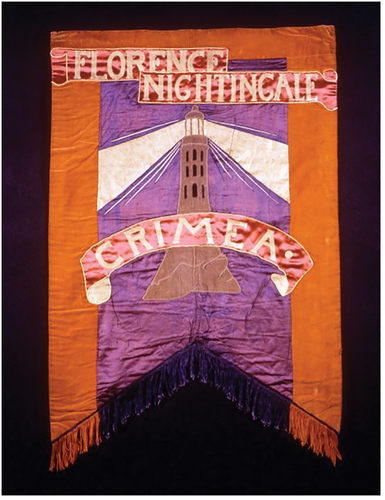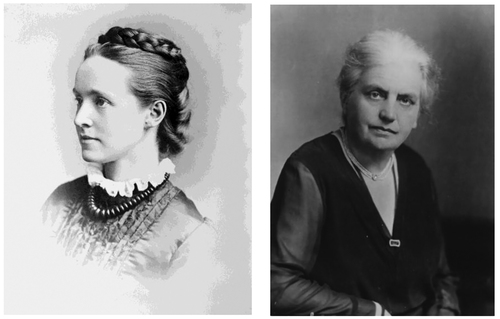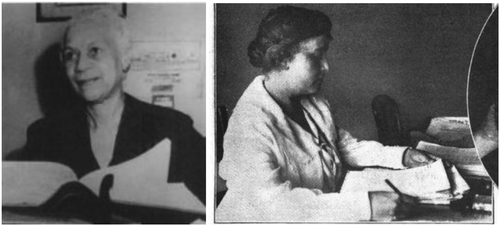Abstract
A few enlightened statistical minds played an important but largely unrecognized role in achieving the women’s universal suffrage worldwide, and overall, the role of statistics itself in the achievement has been under reported. While the socio-economic context of the UK and the US was notably different, in both countries the suffrage movement succeeded almost simultaneously. This was an accomplishment achieved after many years of steady campaigning alongside other social movements and by often highly educated women and their allies.
A few enlightened statistical minds played an important but largely unrecognized role in achieving women’s universal suffrage worldwide, and overall the role of statistics itself in their achievement has been under-reported.
Notably, in the UK, the two women leading the National Union of Women’s Suffrage Societies (NUWSS)—Millicent Fawcett (née Garrett; 1847–1929) and Eleanor Florence Rathbone (1872–1946)—were Fellows of the Royal Statistical Society (RSS). They authored a significant number of pioneering reports and articles that provided quantitative and qualitative evidence of the significant yet unrecognized contributions of women to society.
Their work not only helped shape the cause, but led to policies that would change the lives of women for the better and that, most importantly, brought them to the forefront of policy and research (both as subjects and authors), which extended beyond the first enfranchisement success in 1918.
Examples of such policies were equal pay, an area that both women addressed, and family allowances, which was Rathbone’s pioneering idea to help women and alleviate child poverty. Rathbone’s relentless campaigning saw this financial help being established in 1945 to recognize the caring responsibilities of mothers. The scheme or program, now known as child benefit, is still the only universal support for mothers in the UK.
Also pivotal to the campaign for the universal vote in the UK were works from other RSS Fellows and social reformers who highlighted statistical gaps and attempted to address them. Charles W. Dilke, 1907–1908 president of the RSS and a liberal politician supportive of the feminist movement, spoke up about the use of “imaginary statistics” given the lack of “true franchise statistics.”
In Fawcett’s words, women were “an unknown quantity,” which scared members of all parties because they could not predict whom women would vote for. Clara Collet (1860–1948) and Charles Booth (1840–1916) shed some light on the distribution of women in different social strata with their ground-breaking social surveys.
Elizabeth Leigh Hutchins (1858–1935), who was an active member of the Fabian Society (precursor of the Labor Party), collected further statistics about women’s employment, providing a comprehensive picture of their representation in all sectors, including trade unions, and refuting “the old-fashioned optimistic assumption that women will all get married and be provided for by their husbands.”
Suffrage banner celebrating Florence Nightingale (1908) by Mary Lowndes.
Source: LSE Women’s Library, F04C.

Among active supporters of the movement in the RSS, Florence Nightingale—the first woman to be elected an RSS Fellow—was a signatory of the public petitions for women’s vote. In return, her name was celebrated by suffragists in one of the banners displayed at their rallies.
In the U.S., the Census Bureau played an important, albeit indirect, role in the movement over and above its essential provision of data. This organization was already ahead of the curve in 1880 when it started hiring women as professional enumerators. By 1909, 10 years before the 19th Amendment granting women the vote was passed by the U.S. Congress, more than 50 percent of the Census Bureau’s 624 employees were women. Some of these pioneers went on to become figureheads in the suffrage movement.
In 1910, Gertrude Elzora Durden (1880–1962) passed the required examination and became one of the 1,605 African American enumerators working nationwide. She would later move on to law, becoming the first Black woman to pass the Iowa state bar in 1918. Her work focused on women’s legal rights, including participation in various suffragist groups, such as the Colored Women’s Suffrage Club.
Similarly, Emily Ida Farnum (1875–1942), an active member of the American Statistical Association, combined her tireless career at the Census Bureau starting in 1900 with her suffrage conviction. She wrote letters to the original Washington Times as a proponent of a woman’s right to vote in 1914, participated in marches, and was elected in 1916 as the executive member of the Stanton Suffragette Club. In 1919, a month after the amendment was passed, the Census Bureau promoted her to chief of the Appointments Division, making her the first woman to be an expert chief of a division.
Given the attention that polling statistics receive these days and the constant references to the suffrage movement in the newspapers of the time, it is surprising that few articles on the topic were published before or around the time of the final enfranchisement in any of the leading statistical journals. A notable exception in the U.S. was a 1917 article by Columbia University sociologist Charles Elmer Gehlke (1884–1968) in Publications of the American Statistical Association that tried to address the rumor that women’s suffrage was opposed by groups in the electorate who were favorable to the continuation of the legalized manufacture and sale of alcoholic liquors (on the assumption that women would oppose such sales).
In his case study, Gehlke found that “on the average, a neighborhood in Cuyahoga County which was strongly for suffrage was strongly for prohibition and less strongly against license,” based on analysis of data from his home county on a number of amendments to the Ohio State Constitution. Gehlke tried to prove that these were not spurious correlations, but further research and data was required to generalize his conclusions.
Spurious or not, many suffragists felt the potential implied relationship was a liability. Ohio campaigner Harriet Taylor Upton (1853–1945) had to publicly state: “Let me explain that the suffrage association is not a temperance organization.”
While the socio-economic context of the UK and the U.S. was notably different, the suffrage movement succeeded almost simultaneously in both countries. This was achieved after many years of steady campaigning, alongside other social movements and by often highly educated women and their allies. The role of statistics in this success has been massively understated and so have some of the discipline’s hidden figures who made it possible.
Additional information
Notes on contributors
Altea Lorenzo-Arribas
Altea Lorenzo-Arribas is a socio-economic statistician at Biomathematics and Statistics Scotland (BIoSS), an elected member of the Royal Statistical Society Council, and secretary of the RSS History of Statistics Section.
Further Reading
- Booth, C. 1893. Life and Labour of the People in London: First Results of An Inquiry Based on the 1891 Census. Opening Address of Charles Booth, Esq., President of the Royal Statistical Society. Session 1893–94. Journal of the Royal Statistical Society 56(4):557–593.
- Carney Smith, J., and Phelps, S. 1992. Notable Black American Women, Book 2. VNR AG.
- Collet, C. E. 1908. The Social Status of Women Occupiers. Journal of the Royal Statistical Society 71(3):513–515.
- Garrett Fawcett, M. 1913. The remedy of political emancipation. In The New Statesman, Special Supplement on the Awakening of Women.
- Gehlke, C. E. 1917. On the Correlation Between the Vote for Suffrage and the Vote on the Liquor Question. A Preliminary Study. Publications of the American Statistical Association 15(117):524–532.
- Hutchins, E.L. 1915. Women in Modern Industry. London, England: G. Bell and Sons (defunct).
- Lorenzo-Arribas, A. 2023. Millicent Fawcett and Eleanor Rathbone: The Royal Statistical Society suffragists. Significance 20(4):34–39. https://doi.org/10.1093/jrssig/qmad065.
- Rathbone, E. 1917. The remuneration of women’s services. Economic Journal 27(105):55–68.
- Rathbone, E. No job too big for them. 1919. The Green Book Magazine. Stories of Women’s Achievements.
- U.S. Census Bureau. Emily I. Farnum. Progressive Woman in the Federal City. https://www.census.gov/history/pdf/farnum28feb17.pdf.
- U.S. Census Bureau. Gertrude E. Rush. Census Enumerator and Legal Pioneer. https://www.census.gov/history/pdf/rush6mar.pdf.
- Weiss, E. 2018. Women, Booze and the Vote. https://www.nytimes.com/2018/03/05/opinion/women-votes-feminism-alcohol.html.



